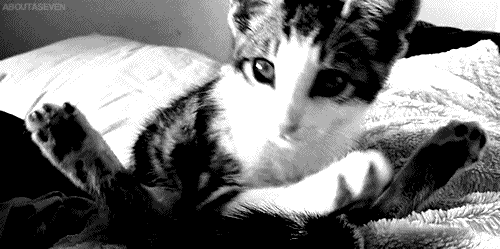Question
(Thanks to Simon for reminding me of this important probability lesson!)
At random, you are tested for Malady X. Alarmingly (particularly given that you don’t even know what Malady X is) the test comes back positive. But you know these tests are not always perfect – there’s a chance that it’s wrong, and you don’t really have Malady X at all. So you ask how accurate the test is. You are told that if someone really does have Malady X, there’s a 99% chance the test will come back positive; for someone that doesn’t have it, there is a 99% chance the test will come back negative.
What is the probability that you actually have Malady X?
Animated Gif
Here is the best animated gif of a cat I have seen in a long time:
Link
(via Silv3r): A huge and (I think?) growing collection of street fliers that play with the form, some okay and others quite, quite brilliant, can be found here (browse the other pages if you like what you see).
Picture
I am proud to be able to say that I know James White, the author of this perfect 3-panel comic, personally.

Answer
Last time I asked about what people really mean when they claim “change is accelerating”.
The most direct and plausible answer came from John B, who suggested that the scope of human knowledge is the thing that is really growing, and the subjective change we experience is what arises from these discoveries. While it’s only a proxy, one way to measure this is to track how many patents are granted over time, and on a logarithmic scale this does look kind of linear (indicating acceleration).
Bex has an alternative view. The perception of change seems to generally accelerate with age (which in itself is already enough to explain why people claim this all the time). The population of the UK (at least) is ageing. Therefore, the speed-of-change will be reported to be, on average, faster over time. Sneaky!
As the Wikipedia article on the subject currently notes, another confounding factor could be the growth of the human race itself. For example, if a fixed proportion of humans files patents, exponential growth in human race will directly lead to exponential growth in patents filed.
In any field, taking any trend and extrapolating it arbitrarily far into the future is generally unwise. If we don’t know exactly what we’re measuring, and we don’t understand the factors governing the change, even less so. Given the potential disruptions of the technology we’re seeing already, if anything it seems just as likely to me that sudden power imbalances become more likely, which could lead to large swathes of humanity being wiped out, or global human society turning into a dead-end all-powerful dictatorship with no desire to change the status quo.
